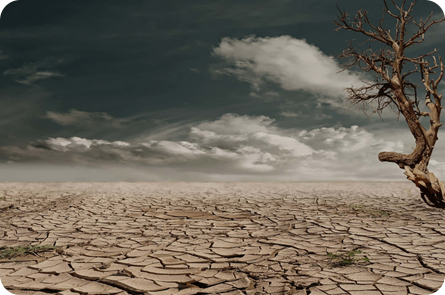Reclaiming Tomorrow’s Climate: One Small Step for Man – Simon Lee

- admin
- 04/27/2024
Imagine a world where nature drowns out megalopolises, seasons blend, and the wind sends cautions rather than sweets. This is our agonizing reality, becoming closer every day. This narrative passionately urges us to confront climate change, our biggest issue. There is little scientific doubt that if we do nothing, drought, famine, and mass displacement would fuel decades of conflict. Understanding the causes of Earth’s decline is essential to reversing it. Inaction has catastrophic repercussions.
Increasing Droughts:
Droughts have increased worldwide due to climate change inaction. These excessively dry times damage crops, water sources, and ecosystems. Once-rainy areas now have lengthy dry spells, depleting reservoirs and aquifers. Water scarcity affects crops, livestock, and humans who need it to survive. Communities around the world are facing previously inconceivable water emergencies. The impact on food and water supplies emphasizes the need for sustainable water management.
Rising food insecurity and famine:
Climate change inaction increases food insecurity and famines. Crop yields decrease due to disrupted rainfall patterns, increased precipitation uncertainty, and extreme weather. Food prices grow when agricultural production drops, making it difficult for individuals, especially in developing nations, to buy the basics. Hunger and poverty spiral, threatening world health and stability. Warming climates harm rainfall patterns, increasing variability. The increased frequency and intensity of extreme weather events harm crop output and cause food insecurity. As climate change reduces agricultural output, population growth and urbanization put pressure on the global food supply chain.
Rising Mass Displacement:
Climate change displaces masses. Growing sea levels, more natural disasters, and a lack of habitable land drive millions to flee their homes for safety. In their search for new homes, climate refugees encounter substantial social, economic, and political hurdles. Climate change could relocate 200 million people by 2050, increasing resource competition and war, according to the UN. Population displacement causes humanitarian crises and stresses the social and economic fabric of both displaced groups and receiving regions. This demonstrates the interconnection between environmental and social issues.
Economic Effects:
The environmental effects of climate change are well known, but the economic effects are equally dangerous. Many worry that switching to renewable energy or adopting sustainable practices will cost jobs or slow economic progress. However, a delay on climate change would have even worse economic consequences. Hurricanes, floods, and wildfires cost billions annually. Events like these damage businesses, infrastructure, and public resources. Pollution and climate-related illnesses also strain global healthcare systems. By not investing in sustainable practices now, we risk higher financial losses later. The economic costs of inaction considerably exceed climate change mitigation and adaptation investments.
The Rise of Social Inequality:
Climate change makes social inequality worse. Environmental deterioration disproportionately affects low-income, indigenous, and marginalized communities. These communities typically lack the resources to adapt to climate change or recover from calamities. Climate change harms the environment, increases social differences, and perpetuates poverty and disparity. Climate change disproportionately affects disadvantaged populations, emphasizing the need for fair climate policies that prioritize their needs. Social justice must lead climate action to ensure everyone may flourish in a changing world.
Political and Global Action Challenges:
At the international level, poor political will and policies limit climate change efforts. Poor government support, poor laws, and a lack of international cooperation impede crisis mitigation. The gravity of climate change is still unclear to many. Information scarcity, disinformation, and competing priorities cause inertia. Education and advocacy are essential to overcome these obstacles. Awareness of climate change’s severity and urgency might motivate people and communities to act. Education can provide accurate information about climate change’s causes and effects, as well as realistic mitigation and adaptation strategies. Support has the potential to improve government and corporate policies, as well as accountability.
Conclusion:
We can no longer overlook Earth’s life-threatening decline. Environmental degradation and climate change endanger our planet, health, and future. We can reduce these effects and create a more sustainable world by acting individually and collectively. Every step matters. Everything from energy efficiency to climate policy advocacy contributes to a wider movement. Through a ripple effect, we can influence the world and preserve its beauty and vitality for future generations. We must heed the wind’s warning and act now to protect Earth.
